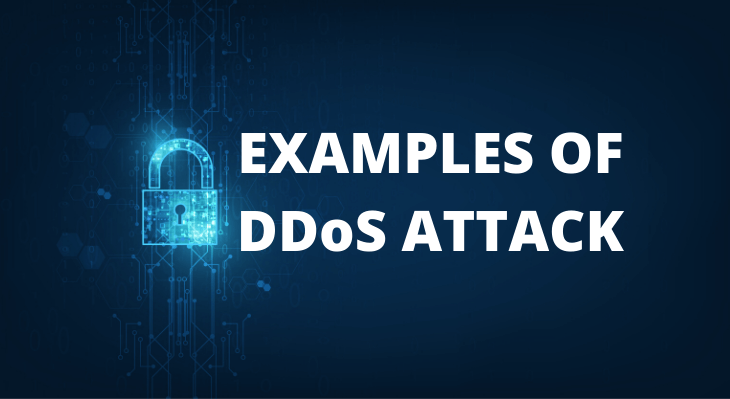Considered as one of the biggest DDoS attacks of all time, in February 2018, GitHub was hit by a DDoS attack with a data rate of 1.35 terabytes per second.
A denial of service (DDoS) attack overwhelms a system’s resources so that the system cannot respond to service requests.
A DDoS attack also targets the resources of a system, but it is launched from a large number of other host machines that are infected with attacker-controlled malware.
The DDoS attack is an abbreviation for the Distributed Denial-of-Service attack that targets a computer system by flooding it with incoming messages or connection requests to cause a denial of service.
However, a DoS (denial-of-service) attack is different from a DDoS attack. In the case of a DoS attack, usually, only one computer and one internet connection are used to flood a targeted system or resource.
Whereas, the distributed denial-of-service attack involves many computers and internet connections to flood the source. In many cases, DDoS attacks are global attacks distributed through botnets.
Below mentioned are some of the most common types of DDoS attack:
This type of attack occurs when a person/program manages to impersonate another with the falsification of data (spoof) and floods the server connection table with SYN packets, bombarding them until they are actually dropped.
With this type of attack, the hackers use the UDP (User Datagram Protocol) connection. Unlike with TCP transmission, data can be transferred via UDP without the need for an established connection.
This attack occurs when ICMP packets overload the servers to such a degree, causing a system failure.
This type of attack occurs when fragmented packets overload the servers.
This type of attack results from bots oriented to connections that floods servers affecting network traffic on service ports such as HTTP, while posing as legitimate users.
This DDoS attack variant consists of the alteration of an IP protocol, which occurs when a latency measurement tool, known as ping, is sent to a system. Sending is done in a massive and malicious way, to collapse the recipient.
The slowloris attack occurs when server resources are reduced to a minimum because they have been collapsed through a massive sending of HTTP connections. It has become one of the most difficult types of DDoS to overcome.
Popular among the hackers, zero-day attacks are nothing more than novel or unknown attacks that exploit vulnerabilities for which no corrections or patches have been published.
Kaspersky Lab, a company specializing in computer security, frequently analyzes attacks on the web. According to a study, it seems that DDoS attacks are more and more frequent since the beginning of the year.
There has been an increase of 84% over the first quarter of 2019 compared to the fourth quarter of 2018.
Amazon Web Services, the biggest cloud service provider globally was targeted by a DDoS attack in a sequence on Oct 22, 2019.
Despite the fact that attack was focused on its Route 53 DNS web service, it also had an impact on its other services including S3, RDS, SQS, EC2, and ELB.
The attack took place from 10:30 AM to 6:30 PM, thus lasting for around 8 hours.
One of the major organization Wikipedia was hit by a DDoS attack on 6th Sep 2019. This attack was experienced in parts of the Middle East and Europe around 2 pm EST.
Insight of these types of attacks, Wikipedia has already set up some dedicated centers to keep a track of such suspicious actions and see to it that they’re in a better position to face this kind of situation, next time around.
The biggest DDoS attack so far took place in Feb 2018. This attack was directed at GitHub, a well-known online code management service used by numerous developers.
At its peak, it was sending packets at a speed of 126.9 million/sec, with incoming traffic at a rate of 1.3 Tbps.
Dyn, a major DNS provider went through the second-largest DDoS attack, in October 2016.
This attack was destructive and created interruptions for many important sites, such as Netflix, Reddit, Airbnb, PayPal, Amazon Visa, The New York Times, and GitHub.
This attack was targeted by using a malware called Mirai. This creates a botnet from the compromised Internet of Things (IoT) devices, such as smart TVs, radios, printers, and cameras.
Spamhaus is an organization that helps fight activities related to spam. The attack brought traffic to Spamhaus at a speed of 300 Gbps. Spamhaus signed up for Cloudflare once the attack began.
Cloudflare DDoS protection mitigated the attack. In an attempt to tear down Cloudflare, the hackers responded to this by pursuing certain bandwidth providers.
A 15-year-old hacker so-called “Mafiaboy” removed several significant websites in 2000, including eBay, Yahoo, CNN, E-Trade, and Dell.
This attack created chaos in the stock market and had destructive consequences. This attack brought forth the creation of many of the current cybercrime laws.
The attacker coordinated the attack by pirating the network of several universities. It was later revealed that the attacker Mafiaboy was a high school student named Michael Calce.
You may also like to read:
How to build an effective DDoS Response Plan?
DNS Hijacking Fix 101

